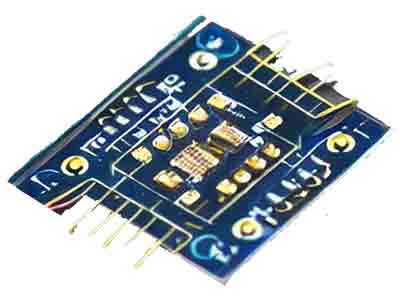Looking for InP Polished on one side only. 1" Dia. Qty: 10 pieces. Commercial grade should be fine. We are using them as witness samples. We will be using as these witness samples while coating integrated optical circuits InP chips.
What Substrates are Used to Fabricate Optical Circuits?
What Substrates are Used to Fabricate Optical Circuits?
An electrical engineer requested the following quote:
Reference #258470 for specs and pricing.
Get Your Quote FAST! Or, Buy Substrates Online and Start Researching Today!
Thermal Oxide Silicon Wafers for Fabricating Optical Circuits
A researcher at a photonic lab requested a quote for the following.
We are looking for 3" or 4" silicon wafers with 1.5 microns thermal oxide layer on it.
We need
Diameter: 4" (3" is also okay)
Type: intrinsic
Doping: intrinsic
Orientation:100
Resistivity: >1000 ohm-cm
Thickness: 300-500um
Polish: one side polish(which will be oxidized)
Grade: for optical circuits
Can you please give us a quote?
Reference #136153 for specs and pricing.
Substrates Used to Fabricate Optical Circuits from Most to Least Expensive
Fabricating optical circuits involves several types of materials or substrates depending on the specific use  case. The cost can vary widely based on the quality, complexity of fabrication, and the specific requirements of the application.
case. The cost can vary widely based on the quality, complexity of fabrication, and the specific requirements of the application.
Here is a general list of substrates commonly used in fabricating optical circuits, roughly ordered from most expensive to least expensive. It's important to note that these are estimates and the actual cost can vary significantly:
-
Diamond: Diamond has superior thermal conductivity and excellent transparency across a broad wavelength range. It is extremely hard and resistant to scratching or abrasion, but it is difficult to work with and significantly more expensive than other materials.
-
Sapphire: Sapphire is very hard, has high thermal conductivity, excellent transparency, and good electrical insulation properties. It is also resistant to radiation damage, making it useful in space applications. However, its cost is high compared to other materials.
-
Silicon: Silicon is a common substrate used in electronics and photonics. It offers good performance and integration capabilities but is more expensive than some other options due to the precision needed in its fabrication.
-
Lithium niobate (LiNbO3): Lithium niobate is a widely used material in photonic applications because of its excellent electro-optic and nonlinear optic properties. Its cost is moderate.
-
Indium Phosphide (InP): InP is used for high-speed electronics and high-power electronics. It is also used in the manufacture of semiconductor lasers and optical integrated circuits. The cost is moderate.
-
Gallium Arsenide (GaAs): GaAs is used in the manufacture of devices such as microwave frequency integrated circuits, monolithic microwave integrated circuits, infrared light-emitting diodes, laser diodes, solar cells and optical windows. Its cost is moderate.
-
Silicon-on-Insulator (SOI): SOI wafers have a layer of silicon, a layer of insulating silicon dioxide, and typically a handle wafer of silicon. They are widely used in the fabrication of microelectronics and microelectromechanical systems (MEMS). The cost is moderate.
-
Silicon Dioxide (SiO2) or Glass: Silicon dioxide or glass substrates are commonly used due to their lower cost, but they have a lower performance than some other materials.
-
Plastic: Plastic substrates are the least expensive and can be used in flexible or disposable applications. However, they have lower performance compared to other materials.
This list is not exhaustive, and the costs can vary based on the size of the substrate, the quality of the material, and other factors.
